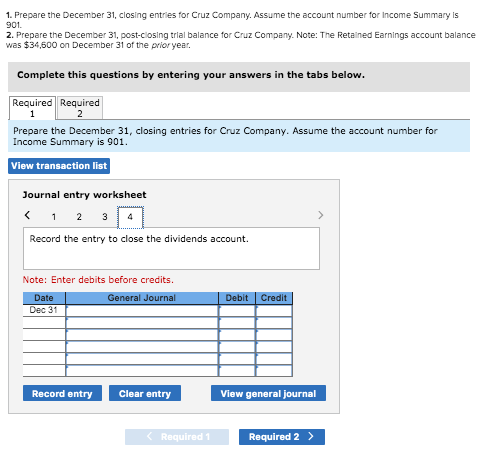
Compounding is the effect where an investment earns interest not only on the principal component but also gives interest on interest. You can look at your loan or credit card disclaimer to figure out if your interest is being compounded and at what rate. Using the rule of 72, you would estimate that an investment with a 5% compound interest rate would double in 14 years (72/5). Information and interactive calculators are made available to you only as self-help tools for your independent use and are not intended to provide investment or tax advice. We cannot and do not guarantee their applicability or accuracy in regards to your individual circumstances. All examples are hypothetical and are for illustrative purposes.
- That amount then accrues interest over each quarter until the end of the three years.
- The daily reinvest rate is the percentage figure that you wish to keep in the investment for future days of compounding.
- However, their application of compound interest differed significantly from the methods used widely today.
- MoneyGeek’s compound interest calculator calculates compound interest using the above formulas.
- The first way to calculate compound interest is to multiply each year’s new balance by the interest rate.
You can include regular deposits and withdrawals in your calculation. Our online tools will provide quick answers to your calculation and conversion needs. On this page, you can calculate compound interest with daily, weekly, monthly, quarterly, half-yearly, and yearly compounding.
This approach is how tax payments would work on savings stored inside a tax deferred retirement account. That amount is compounded quarterly for the number of quarters remaining before the end of the three-year period. Think of this as twelve different compound interest calculations, one for each quarter that you deposit $135. At the end of three years, simply add up each compound interest calculation to get your total future value. The power of compound interest lies in its ability to generate exponential growth over time by reinvesting earnings, leading to significant wealth accumulation and long-term financial advantages.
For example, let’s say you wanted to calculate monthly compound interest. In this case, you would multiply the daily interest rate by approximately 30.42 (or 365 days/12 months) and enter the number of months (as opposed to the number of days). For example, if you put $10,000 into a savings account with a 4% annual yield, compounded daily, you’d earn $408 in interest the first year, $425 the second year, an extra $442 the third year and so on.
You are unable to access investinganswers.com
There are several actions that could trigger this block including submitting a certain word or phrase, a SQL command or malformed data. Daily Compound Interest is calculated using the formula given below. Residential Journal Entries Examples Format How to Explanation real estate returns were around 4.8% nationwide, though some local markets like New York City and San Franscisco have vastly outperformed. Ramsey Solutions is a paid, non-client promoter of participating Pros.
With compound interest, the interest you have earned over a period of time is calculated
and then credited back to your starting account balance. In the next compound period, interest is calculated on the total of the principal plus the
previously-accumulated interest. Banks benefit from compound interest lending money and reinvesting interest received into additional loans. Depositors benefit from compound interest receiving interest on their bank accounts, bonds, or other investments. The following table demonstrates the difference that the number of compounding periods can make for a $10,000 loan with an annual 10% interest rate over a 10-year period.
Find And Compare The Highest Interest Rates
These example calculations assume a fixed percentage yearly interest rate. If you are investing your money, rather than saving it in fixed rate accounts,
the reality is that returns on investments will vary year on year due to fluctuations caused by economic factors. Compound interest simply means you’re earning interest on both your original saved money and any interest you earn on that original amount. Although the term “compound interest” includes the word interest, the concept applies beyond interest-bearing bank accounts and loans, including investments such as mutual funds. Suppose you deposit $1,000 into a savings account with a 5% interest rate that compounds annually, and you want to calculate the balance in five years. You earn an average of 4% annually, compounded monthly across 40 years.
- If you save and invest over a long period, compounding can help you reach your financial goals.
- About half of historical returns were driven by dividends, while the other half was driven by capital appreciation.
- Ordinary interest on a regular bank savings account is typically paid for on an annual basis, with banks sending account holders a 1099-INT if they earn above some baseline level of around $10 in interest.
- For example, imagine you have a credit card with an APR of 15.90%.
- Yet the earlier you start saving, the more compounding interest can work in your favor, even with relatively small amounts.
As a general guideline, we suggest you start investing when you’re debt-free (other than a mortgage) and have 3–6 months of expenses saved in an emergency fund. The MoneyGeek compound interest calculator uses a pie chart to show you the initial amount you contributed in purple, the total interest you earned in green and your total contributions in blue. Annual Interest Rate (ROI) – The annual percentage interest rate your money earns if deposited. As shown by the examples, the shorter the compounding frequency, the higher the interest earned. However, above a specific compounding frequency, depositors only make marginal gains, particularly on smaller amounts of principal.
How do you compound interest monthly?
For longer-term savings, there are better places than savings accounts to store your money, including Roth or traditional IRAs and CDs. If you want to roughly calculate compound interest on a savings figure, without using a calculator, you can use a formula called
the rule of 72. The rule of 72 helps you estimate the number of years it will take to double your money. The method is
simple – just divide the number 72 by your annual interest rate.

Historically, rulers regarded simple interest as legal in most cases. However, certain societies did not grant the same legality to compound interest, which they labeled usury. For example, Roman law condemned compound interest, and both Christian and Islamic texts described it as a sin. Nevertheless, lenders have used compound interest since medieval times, and it gained wider use with the creation of compound interest tables in the 1600s. We believe everyone should be able to make financial decisions with confidence.
Because of this, we might be unable to invest our money at the same rate, and our effective returns might differ. So, in essence, this theoretical representation demonstrates what we could achieve if we reinvested all the money at that rate each day. This formula is the projected rate of return on an asset or investment, even if it does not explicitly pay compounded interest. The CAGR is a form of the compound interest formula, but rearranged algebraically to solve for the interest rate using the beginning balance, ending balance and number of periods. When saving and investing, this means that your wealth grows by earning investment returns on your initial balance and then reinvesting the returns.
The more frequently the sum is compounded, the faster it will grow. If you save and invest over a long period, compounding can help you reach your financial goals. You will earn more money on your initial balance than you started. Compound interest takes into account both interest on the principal balance and interest on previously-earned interest.
Compound Interest Formulas Used in This Calculator
After 10 years of compounding, you would have earned a total of $4,918 in interest. Daily compound interest is calculated using a simplified version of the formula for compound interest. To begin your calculation, take your daily interest rate and add 1 to it. Next, raise that figure to the power of the number of days it will be compounded for. Subtract the starting balance from your total if you want just the interest figure. The long-term effect of compound interest on savings and investments is indeed powerful.
Although the interest rate may be less than other investments, this adds up over time. Let’s go back to the savings account example above and use the daily compound interest calculator to see the impact of regular contributions. We started with $10,000 and ended up with $4,918 in interest after 10 years in an account with a 4% annual yield. But by depositing an additional $100 each month into your savings account, you’d end up with $29,648 after 10 years, when compounded daily.
Invest Like Todd
Instead, we advise you to speak to a qualified financial advisor for advice based upon your own
circumstances. For the remainder of the article, we’ll look at how compound interest provides positive benefits for savings and investments. While our formula computes the future value, finding the interest portion is only one more step.
Between 1970 & 2016 the S&P 500 Index returned an average annual return of 10.31% while REITs returned an average of 11.42%. To calculate the ending balance with ongoing contributions (c), we add a term that calculates the value of ongoing contributions to the principal balance. The future balance of $1,000 will be worth $1,127.49 after two years if the compounding period is daily. Total Deposits – The total number of deposits made into the investment over the number of years to grow. Compound interest has dramatic positive effects on savings and investments.

